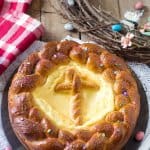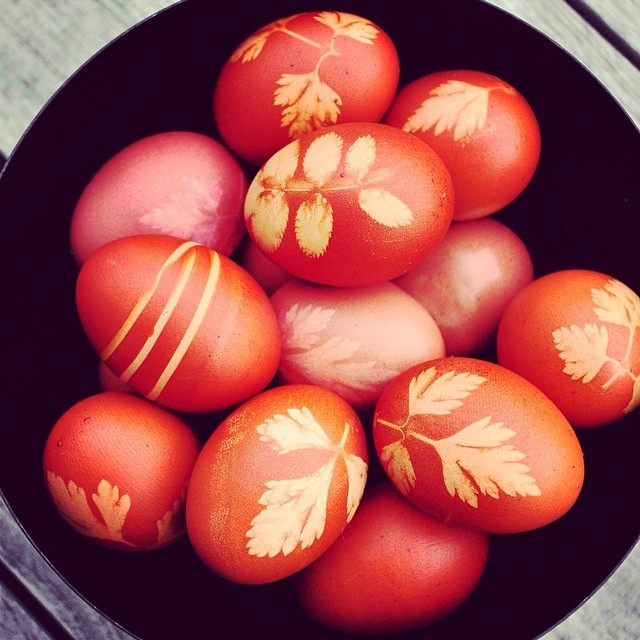For many Christians, Easter or “Pascha” is the time we remember, and celebrate the resurrection of Jesus from the dead. It is a spiritual reflection that reminds us of the forgiveness and atonement we have recieved through Jesus that died on the cross. This commemoration starts with a prior 40-day Lenten fast, abstinence, and prayer. During the Lenten fast, Roman Catholics are allowed to eat eggs, milk, fish, grains, fruits, and vegetables. Yet, avoid eating meat. On the other hand, Orthodox Christians go a little further and avoid eating eggs, dairy, meat or their by-products. The final week of Lent is considered the “Holy Week” and marks the final week of Jesus’ earthly life. The Friday of Holy Week commemorates Jesus’ suffering and crucifixion, and is called, Good Friday. The Sunday of Holy Week commemorates Jesus’ resurrection, and is called Easter Sunday.
Here are some meals prepared during Good Friday:
· Hot cross bun--- English sweet spiced buns with raisins to represent the spices used to embalm Jesus for his burial, and are marked with a cross to symbolize Jesus’ crucifixion.
· Capirotada--- Mexican dish consisting of bread representing Jesus’ body, syrup representing the blood, and cinnamon sticks representing the wood of the cross.
· Franesca---- Ecuadorian soup prepared with salted cod to represent Jesus, gourd and 12 different kinds of beans, or vegetables to represent the apostles.
Here are some meals prepared for Easter Sunday:
· Easter Bread
Ø Kulich--- Russian sweet bread with golden raisins, with optional additives such as white chocolate chips, dried cranberries, dried blueberries, and orange peel zest. It is cooked in a tall mold (or coffee can), and has a signature white sugar glaze on top. It is decorated with symbols of the cross and initials “XB” to represent “Christ is Risen.” Ukrainians, call this, Babka, yet usually do an egg wash glaze instead of the sugar glaze.
 Ø Cozonac--- Romanian sweet twisted bread with a nutty walnut/pecan, raisin filling, also made on Christmas and new years.
Ø Cozonac--- Romanian sweet twisted bread with a nutty walnut/pecan, raisin filling, also made on Christmas and new years.
Ø Pasca--- Romanian braided bread with a cheesecake filling in the center
Ø Kolach--- Eastern European braided plain white bread with symbols made of dough, glazed with egg wash.
Ø Tsoureki--- Greek sweet braided bread that sometimes is decorated and/or served with red eggs representing the blood of Christ.
Ø Casatiello--- Neapolitan savory pie bread filled with meat, cheese, and eggs.
Ø Cosciotto di Agnello con Patate--- Sicilian dish of lamb and potatoes, representing the sacrifice of Christ.
Ø Osterchinken im Brotteig--- German ham cooked inside bread dough with an egg in the middle.
· Eggs & Dairy
Ø Red Dyed eggs--- Eggs are boiled and dyed red to represent the blood of Christ. The hard shells symbolize the sealed tomb, and are cracked to represent Jesus’ resurrection.
Ø Paskha--- Eastern orthodox cheese desert shaped like a pyramid to represent the tomb and eaten with bread. Its white color represents Jesus’ purity.
Ø Resurrection rolls--- Southern American crescent rolls stuffed with a large marshmallow representing Jesus that melts/”vanishes” in the oven to represent Jesus’ resurrection. The butter and cinnamon represent the spices used to anoint Jesus’s body.
What Easter traditions do you practice?
Photo source: all-thats-jas.com; historyofarmenia.tumblr.com
#Spiritualhealth #Creatingmemories #Eastermealideas #Eastertraditions #Healthystrongbeautiful #HSBvibes #HSB #thrive #optimism #lifeperspective #awareness #healthpromotion #diseaseprevention #wholistichealth #healthyliving #nurseselfcare #mentalhealth #physicalhealth #spiritualhealth #Healthandfitness #healthcoach #wellnesscoach #lifestylecoach #healthandwellness #selfcare #takingcareofyourself





No comments:
Post a Comment